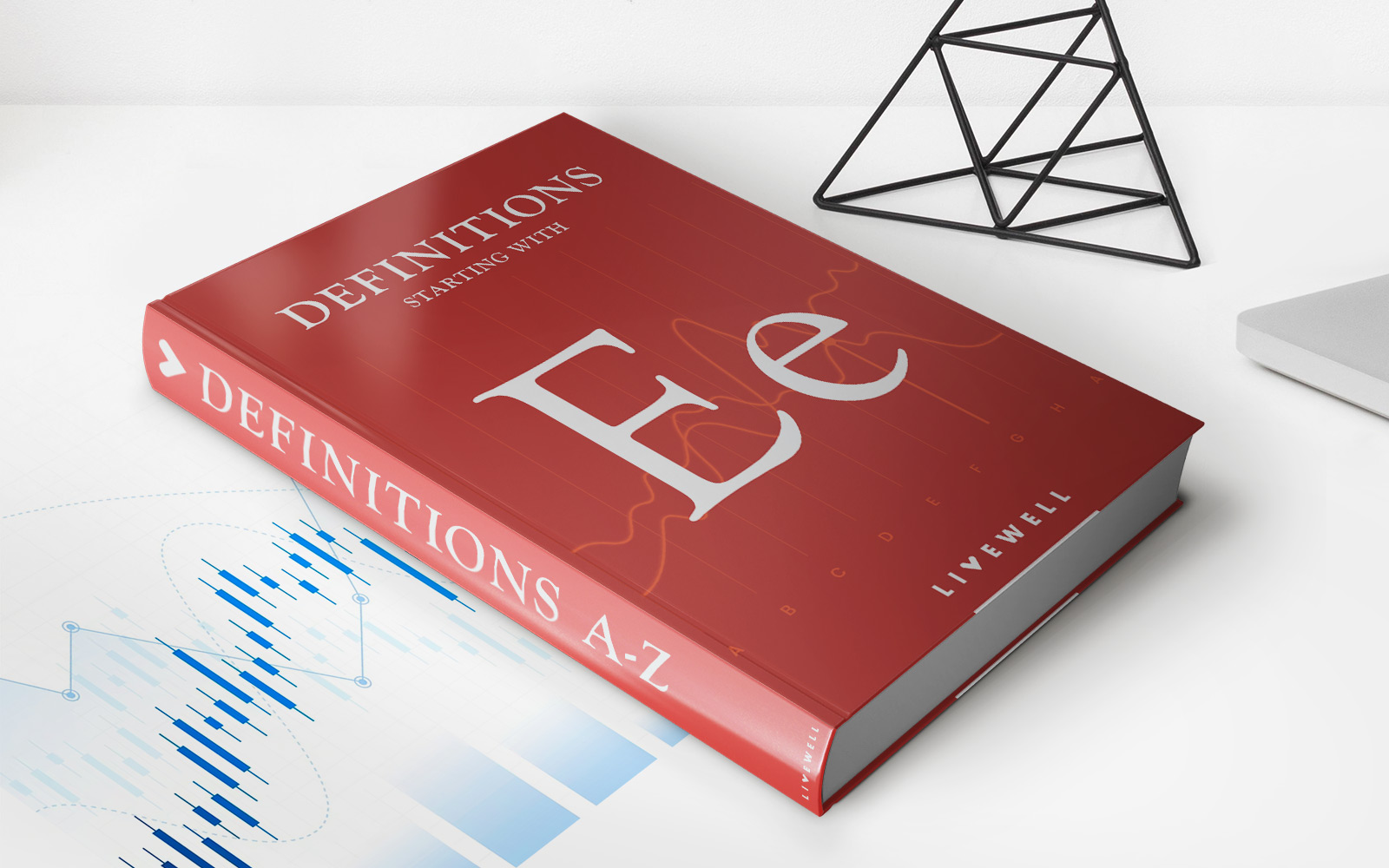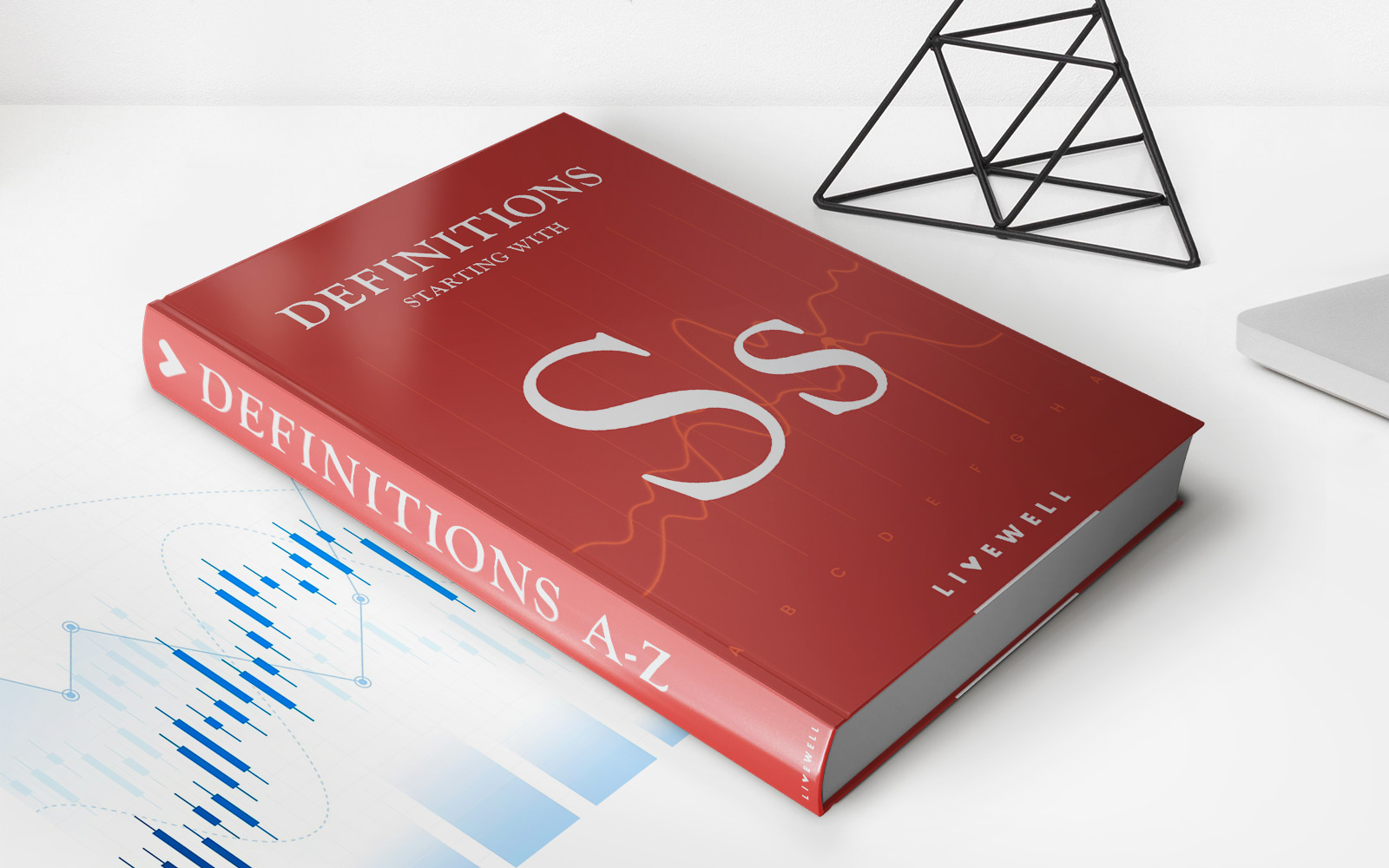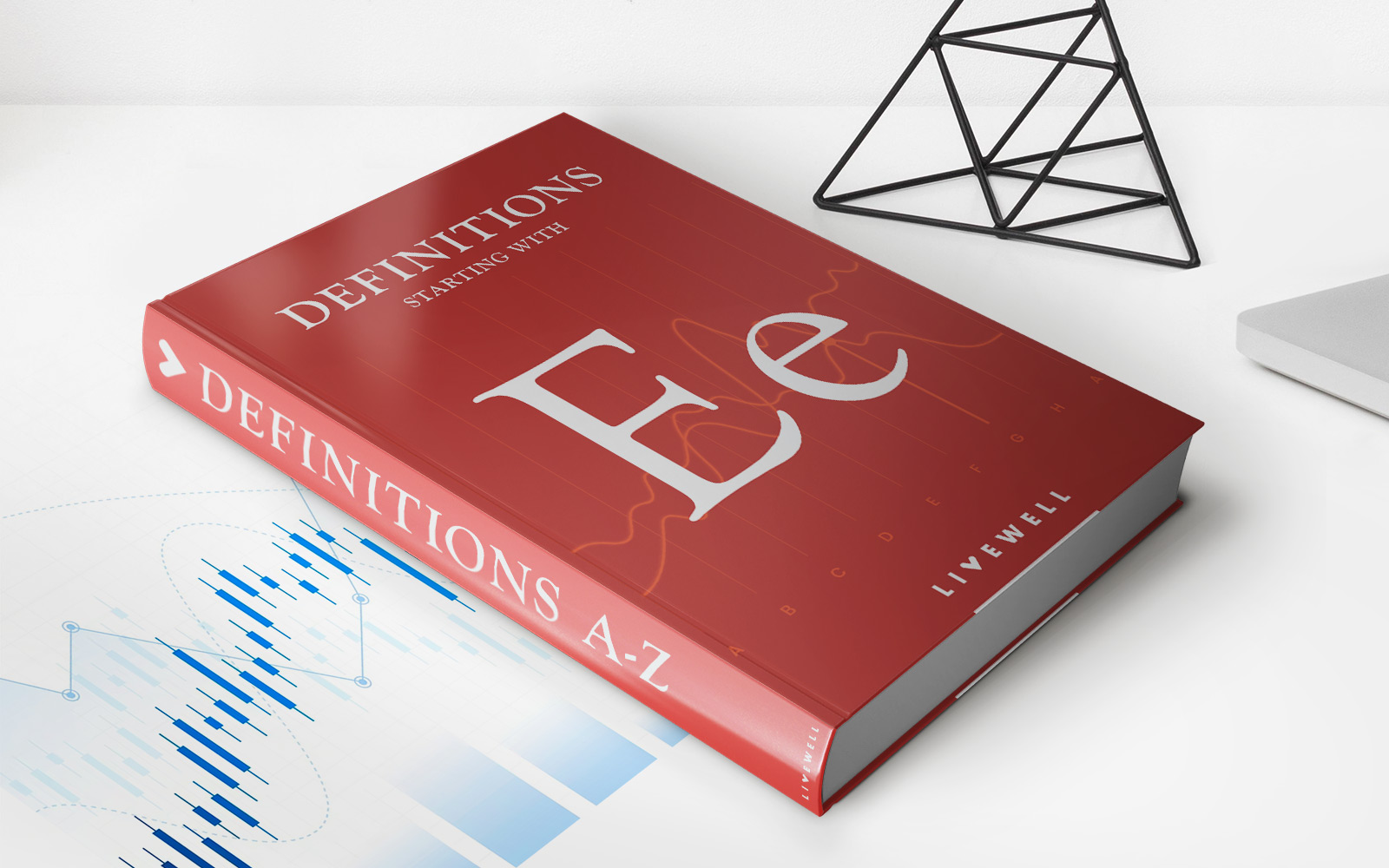

Finance
What Is The Cost Basis Of Life Insurance?
Published: October 14, 2023
Discover the importance of understanding the cost basis of life insurance. Get expert insights and financial tips on managing your finances with our comprehensive guide in Finance.
(Many of the links in this article redirect to a specific reviewed product. Your purchase of these products through affiliate links helps to generate commission for LiveWell, at no extra cost. Learn more)
Table of Contents
Introduction
Welcome to the world of life insurance! It’s a financial tool that provides peace of mind and security for yourself and your loved ones. When considering life insurance, it’s important to understand various aspects such as the cost basis, which plays a crucial role in determining the tax implications of your policy.
The cost basis refers to the original investment or value of an asset. In the context of life insurance, it represents the amount of money you have invested in the policy. Understanding the cost basis is essential because it affects how the policy is taxed and any potential gains or losses when surrendering or selling the policy.
Life insurance is designed to offer financial protection, whether as a means to replace lost income, cover outstanding debts, or ensure a legacy for your loved ones. As you embark on this journey, it’s important to have a grasp of the cost basis, as it will provide clarity on the financial implications of your life insurance policy. In this article, we will delve into the intricacies of the cost basis of life insurance, factors that influence it, how to calculate it, and the tax implications associated with it.
So, let’s explore the fascinating world of life insurance and the cost basis that underlies it, so you can make informed decisions and maximize the benefits of your policy.
Understanding the Cost Basis of Life Insurance
The cost basis of a life insurance policy is the amount of money you have invested in the policy. It represents the original investment or value of the policy and plays a crucial role in determining how the policy is taxed.
When you purchase a life insurance policy, you are essentially entering into a contract with the insurance company. You agree to pay premiums, either in a lump sum or over a period of time, in exchange for the promise that the insurance company will provide a death benefit to your beneficiaries upon your passing.
The cost basis is determined at the time you initially purchase the policy. It includes the total premiums you have paid, minus any fees or charges deducted by the insurance company. Additionally, any dividends or cash value accumulation within the policy may also be factored into the cost basis.
The cost basis represents the amount of money that has already been taxed, as you have used after-tax dollars to pay the premiums. Therefore, your beneficiaries typically do not have to pay income tax on the death benefit they receive from the policy. However, it’s important to note that there are exceptions or special circumstances where the death benefit may be subject to taxation.
The cost basis also has implications if you decide to surrender or sell your life insurance policy before your passing. If the cash surrender value of the policy exceeds the cost basis, the difference may be considered a taxable gain. On the other hand, if the cash surrender value is lower than the cost basis, it may result in a loss.
Understanding the cost basis of your life insurance policy is crucial as it provides insight into the tax implications and potential gains or losses associated with the policy. It’s important to consult with a financial advisor or tax professional to ensure you have a clear understanding of how the cost basis will affect your specific situation.
Factors Influencing the Cost Basis
Several factors can influence the cost basis of a life insurance policy. Understanding these factors is essential as they can impact the tax implications and overall value of the policy. Here are some key factors that influence the cost basis:
- Age and Health: Your age and health at the time of purchasing the policy can have a significant impact on the cost basis. Generally, younger and healthier individuals are likely to have lower premiums, resulting in a lower cost basis.
- Policy Type: The type of life insurance policy you choose can also affect the cost basis. There are different types of policies such as term life insurance and permanent life insurance. Term life insurance tends to have lower premiums and a lower cost basis, while permanent life insurance, such as whole life or universal life, may have higher premiums and a higher cost basis.
- Premium Payments: The amount and frequency of premium payments can impact the cost basis. If you pay premiums in a lump sum upfront, the total amount will be included in the cost basis. However, if you make regular premium payments over time, only the premiums paid up to a certain point will be included in the cost basis.
- Additional Riders: Riders are additional features or benefits that you can add to your life insurance policy for an extra cost. These riders can include accelerated death benefits, waiver of premium, or cash value accumulation. The inclusion of riders may increase the cost basis of the policy.
- Dividends and Cash Value: Some life insurance policies, such as participating whole life insurance, offer the potential to receive dividends or accumulate cash value over time. Dividends received or cash value accumulated within the policy may increase the cost basis.
- Policy Changes: Any changes made to the policy after the initial purchase, such as increasing the death benefit or adding riders, may also impact the cost basis. It’s important to consider the potential implications on the cost basis when making changes to your policy.
These factors interact with one another to determine the overall cost basis of the life insurance policy. It’s crucial to carefully consider these factors when purchasing a policy and to periodically assess how changes in your life or policy may affect the cost basis.
Remember, the cost basis plays a significant role in determining the tax implications and potential gains or losses associated with your life insurance policy. Consulting with a financial advisor or insurance professional can help you navigate these factors and make informed decisions to optimize the cost basis of your policy.
Calculating the Cost Basis of Life Insurance
Calculating the cost basis of a life insurance policy requires careful consideration of various factors such as premiums paid, fees deducted, and any cash value accumulation. While the specific calculations may vary depending on the policy, the following steps can help you determine the cost basis:
- Identify total premiums paid: Determine the total amount of premiums you have paid into the policy since its inception. This includes both the regular premiums and any additional or one-time payments made.
- Subtract fees and charges: Take into account any fees or charges deducted by the insurance company. These may include administrative fees, mortality charges, or surrender charges. Subtract these fees from the total premiums paid.
- Incorporate any cash value accumulation: If your policy has a cash value component, which is common in permanent life insurance policies, factor in the accumulated cash value. This is the value that grows within the policy over time. Consider the amount of cash value accumulated when calculating the cost basis.
- Add or subtract dividends: If your policy is eligible for dividends, whether in the form of cash payout or used to purchase additional coverage, include the dividends in the cost basis calculation. Add the dividends received or deduct them from the total cost basis.
- Consider policy changes: Any changes made to the policy, such as increasing the death benefit or adding riders, may have an impact on the cost basis. Take into account these changes when calculating the cost basis.
Once you have gathered all the necessary information, add up the premiums paid, subtract any fees, account for cash value accumulation, and incorporate dividends and policy changes. The resulting figure will be the cost basis of your life insurance policy.
It’s important to note that the calculation of the cost basis can be complex, especially for policies with cash value or dividend features. If you’re unsure about the calculations or need assistance, consider consulting with a financial advisor or a knowledgeable insurance professional who can guide you through the process.
Understanding the cost basis of your life insurance policy is crucial as it provides transparency into the financial implications and potential gains or losses associated with the policy. Being aware of how the cost basis is calculated allows you to make informed decisions and optimize the value of your life insurance coverage.
Adjustments and Changes to the Cost Basis
Throughout the life of a life insurance policy, there may be adjustments and changes that can impact the cost basis. These adjustments can occur due to factors such as changes in premiums, additional riders, or alterations to the death benefit. Understanding how these adjustments affect the cost basis is crucial for managing your life insurance policy effectively. Let’s explore some common adjustments and changes that can impact the cost basis:
- Premium Changes: Any changes in your premium payments can influence the cost basis. For example, if you decide to increase your premiums, the additional amount paid will be added to the cost basis. Conversely, if you reduce your premiums, the decrease will be subtracted from the cost basis.
- Additional Riders: The inclusion of additional riders in your life insurance policy can impact the cost basis. Adding riders such as a waiver of premium or accelerated death benefit rider may increase the cost basis, as these riders typically come at an additional cost.
- Death Benefit Changes: Alterations to the death benefit can also affect the cost basis. If you increase the death benefit, the cost basis will increase accordingly. Conversely, if you decrease the death benefit, the cost basis will decrease as well.
- Policy Conversions: If you convert a term life insurance policy into a permanent life insurance policy, the cost basis may be adjusted. The cost basis calculation for the new permanent policy will take into account the premiums paid for the original term policy, as well as any additional premiums paid for the conversion.
- Partial Surrenders or Policy Loans: If you take a partial surrender or policy loan against your life insurance policy, it can impact the cost basis. The amount surrendered or borrowed is subtracted from the cost basis, as it represents a reduction in the overall investment in the policy.
These adjustments are just a few examples of how changes to your life insurance policy can impact the cost basis. It’s important to keep detailed records of any adjustments or changes made to your policy and update the cost basis accordingly. By staying informed about these adjustments, you can understand the potential tax implications and make informed decisions about your policy.
Remember, if you have questions or concerns about adjustments and changes to the cost basis, it’s best to consult with a financial advisor or insurance professional who can provide guidance specific to your situation. They can help you navigate these adjustments and ensure you have a clear understanding of the impact on your life insurance policy and its cost basis.
Tax Implications of the Cost Basis
The cost basis of a life insurance policy has important tax implications. Understanding these implications can help you navigate the tax landscape and make informed decisions regarding your policy. Here are some key tax considerations related to the cost basis of life insurance:
Income Tax: Generally, the death benefit paid to your beneficiaries is not subject to income tax. This is because your premiums are paid with after-tax dollars, and the cost basis represents the amount of money that has already been taxed. However, there are exceptions to this rule. If your policy is considered a modified endowment contract (MEC) or if the death benefit is paid out in installments or annuities, there may be tax implications. It’s important to consult with a tax professional to understand the specific tax treatment of your policy.
Cash Surrender: If you decide to surrender your life insurance policy for its cash value, any gains above the cost basis may be subject to taxation as ordinary income. This is because the gains represent a return on your investment, similar to interest or capital gains. The specific tax treatment will depend on your individual circumstances and tax laws. It’s important to consult with a tax professional to determine the tax implications of surrendering your policy.
Policy Loans: If you take a loan against the cash value of your life insurance policy, it is usually not considered taxable income. This is because a policy loan is not considered a distribution of funds but rather a loan that you are required to repay. However, if the policy lapses or is surrendered with an outstanding loan balance, the amount of the loan, including any accrued interest, may be subject to taxation.
Estates and Estate Tax: When it comes to estate planning, the cost basis of a life insurance policy is not directly relevant for estate tax purposes. The death benefit of a life insurance policy is generally included in your estate for estate tax calculations, regardless of the cost basis. However, the overall estate tax impact will depend on the size of your estate and applicable tax laws. It’s important to work with an estate planning professional to understand how your life insurance policy will factor into your estate plan.
It’s worth noting that tax laws can change, and the tax treatment of life insurance policies may vary based on factors such as the type of policy, the amount of the death benefit, and the duration of the policy. Therefore, it’s crucial to consult with a qualified tax professional or financial advisor who can provide advice tailored to your specific circumstances.
Understanding the tax implications of the cost basis of your life insurance policy is essential for maximizing the benefits of your policy and ensuring compliance with tax regulations. By taking a proactive approach and seeking professional guidance, you can navigate the tax landscape with confidence and make informed decisions regarding your life insurance policy.
Conclusion
The cost basis of a life insurance policy is a fundamental aspect that determines the tax implications and potential gains or losses associated with the policy. It represents the original investment or value of the policy, taking into account premiums paid, fees, cash value accumulation, and policy changes.
Understanding the cost basis is crucial for making informed decisions regarding your life insurance policy. It allows you to navigate the tax landscape, optimize the value of your coverage, and ensure that your loved ones receive the intended financial protection.
Throughout this article, we explored the importance of understanding the cost basis, the factors influencing it, how to calculate it, and the tax implications associated with it. We discussed the role of age and health, policy type, premium payments, additional riders, and the impact of policy changes on the cost basis.
We also touched on the tax implications, such as income tax, cash surrender, policy loans, and estate tax considerations. It’s important to remember that tax laws can change, and the tax treatment of life insurance policies may vary based on individual circumstances and applicable regulations.
To ensure a clear understanding of the tax implications and financial benefits of your life insurance policy, it is recommended to consult with a financial advisor or tax professional who can provide personalized advice based on your specific situation.
By fully grasping the concept of the cost basis and its implications, you can make informed decisions about your life insurance policy, maximize its value, and provide financial security to your loved ones when they need it the most.














